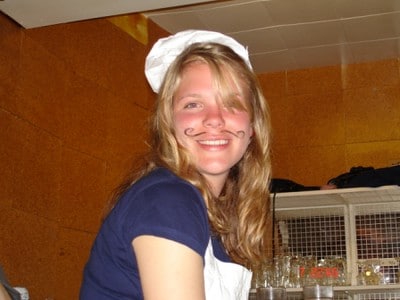Being a chef is about more than just being able to cook, having a good palate, being able to make and follow orders and donning a cool chef’s uniform . It is also about learning the lingo of the industry so that you can not only fit in but also understand exactly what’s going on in the kitchen. A professional kitchen is one of the most stressful environments in which to work, and chefs are often yelling at each other to make sure an order is received, understood and ready. And like most industries, the professional kitchen has developed its own vernacular that is not only efficient but sometimes pretty crude, often being peppered with expletives. As an uninitiated, you may be confused with the lingo, so here’s a guide to some common kitchen jargon you should probably learn before enter a bustling professional kitchen.
A la minute – Regardless of how high-end a restaurant claims to be, there are certain things that simply cannot be made on the spot as it will take too long. The phrase ‘a la minute’ is French for ‘to the minute’ and refers to items been made from scratch in the kitchen.
Chit – This is another name for the ticket the kitchen receives for each table indicating the orders.
On the Line – The ‘line’ is referred to the kitchen area where the cooking is done. Being ‘on the line’ means you form part of the cooking team and work as a line cook, an essential cog in the functioning of the restaurant.
Covers – Covers refers to the number of tables that have been served in a restaurant during a service. Often restaurant employees like to brag about how many covers they did on a busy night, although it is often based on numerous factors like the size of the restaurant and the complexity of the food being served. In theory, a casual or fast food dining restaurant will serve more covers than a small fine dining establishment.
5 Out – Coordination is one of the most essential factors in a busy kitchen with multiple cooks on duty and orders that need to go out, all of which involve various stages of delivery, including cooking, garnishing, and plating. When a cook yells ‘5 out’, this means that the dish will be ready to place in that amount of time.
Mise – Mise is short for mise en place, which is French for ‘everything in its place.’ This refers to all of the prepped items and ingredients needed at a specific station for one service.
Soigne – This is French for elegant and is used to describe a beautiful, well-plated and delicious dish.
Pick Up – ‘Pick up’ is yelled by a chef indicating that a particular dish is ready to be served to a hungry patron.
86d it – This is something you don’t want to hear in the kitchen as it means that you are all out of a certain dish or ingredient. It can also refer to the head chef taking a meal off the menu for an indicated period of time. Regardless of its context, the word is generally associated with disappointment.
If you know any special slangs please write down in comment!
